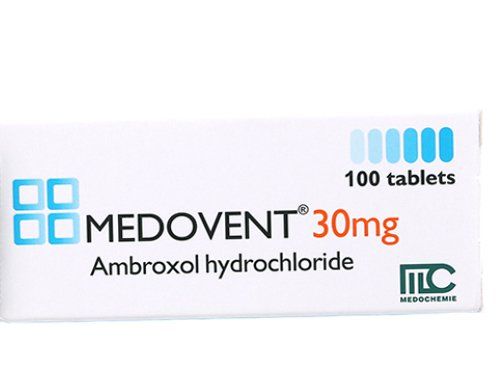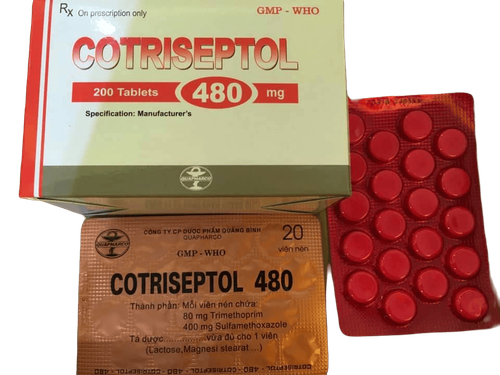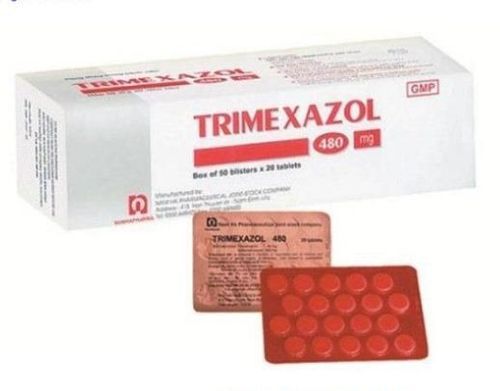This is an automatically translated article.
Imex is a broad-spectrum antibiotic used in inflammatory cases to help control acne. However, do not use Imex to treat illnesses such as colds, flu, or other viral infections.
1. What is Imex?
Imex is an antibiotic with a broad spectrum of action. The drug is used to treat inflammatory diseases in the respiratory tract, urinary tract, digestive tract,... The drug is especially suitable for the treatment of pneumonia caused by Pneumocystis carinii bacteria. This is a prescription medication, so you should only use it as directed by your doctor.
2. What disease does Imex treat?
Imex is indicated for the following infections:
Urinary tract: Uncomplicated and often recurrent lower urinary tract infections in adult women; Patients with prostatitis ; Respiratory tract: Chronic bronchitis exacerbation, acute purulent sinusitis in adults, acute pneumonia in children,...; Gastrointestinal tract: Bacillary dysentery infection; Pneumonia caused by the bacterium Pneumocystis carinii. Imex medicine contains 2 active ingredients, Sulfamethoxazol and Trimethoprim, which inhibit the growth of bacteria. With sulfamethoxazole can inhibit the ability of bacteria to synthesize folic acid. Trimethoprim is a specific inhibitor of the enzyme dihydrofolate reductase in microorganisms. The combination of these two substances causes serial inhibition to kill bacteria (including resistant bacteria). Therefore, Imex can be considered a good choice for patients who are in a state of infection.
3. Dosage of Imex for each specific object
The right time to take medicine is during meals. During treatment, it is necessary to closely monitor the medical condition, especially children and the elderly. Below is the dosage of Imex for each specific object:
Adults and children from 12 years of age and older: The patient uses 2 tablets each time, 2 times a day. The interval between each medication is 12 hours apart; Children from 7 to 12 years old: Use 1 tablet divided into 2 times, used for 1 day. Dosing time is 12 hours apart; Absolutely not prescribe Imex for children under 7 years old. The above dosage may vary depending on the patient's condition and severity of illness. To get the correct dosage for your medical condition, you should consult your doctor or medical professional for more advice.
4. Overdose when using Imex and measures to handle
Patients may experience an overdose when using more than prescribed medication. Many mild cases may present with only symptoms such as nausea, vomiting, loss of appetite, headache, or unconsciousness. In many other cases, patients may have disorders of hematopoiesis, jaundice. These symptoms are indicative of a late stage of overdose. More severe may be met with myelosuppression.
Possible treatment measures:
Induce vomiting in the patient; Carry out gastric lavage; Acidification of urine is intended to increase the ability to eliminate Trimethoprim in the body; If the patient has signs of myelosuppression, leucovorin should be given at a dose of 5 to 15 mg/day. This helps the body restore its ability to make blood.
5. Some unwanted side effects
In the process of using Imex, there may be unwanted side effects in some subjects.
Symptoms that users can most often encounter such as: Nausea, vomiting, itching, diarrhea, glossitis.
Symptoms appear with less frequency such as: Urticaria, decreased white blood cell count, and increased eosinophils.
More rare symptoms when taking Imex such as: Decreased platelet count, patients with Stevens - Johnson syndrome, megaloblastic anemia.
If you experience one of the above symptoms, you need to stop using the drug immediately and move to a medical facility for timely resolution.
6. Things to be careful about when using Imex
Absolutely do not assign drugs to the following subjects:
Patients who are allergic or sensitive to any of the ingredients in the drug; Patients with liver damage, liver disease or impaired kidney function; Deficiency of the enzyme G6PD or a folic acid causes megaloblastic anemia; Children under 2 months old; People who are pregnant or breastfeeding. In the case of long-term treatment with the drug requires periodic bloodogram monitoring, especially in elderly patients, the drug should be discontinued when any of the blood components shows signs of deterioration.
The drug is excreted mainly through the urine, so when using it, it is necessary to drink enough water to ensure that no crystalluria or stones occur.
For people who are pregnant, Sulfamethoxazol in Imex can cross the placenta and cause jaundice in babies. Therefore, pregnant women are advised not to use the drug.
For people who are breastfeeding, it is not recommended to use Cotrimoxazol because they can be toxic to the baby.
Imex is a broad-spectrum antibiotic that is effective in the treatment of infections. However, besides the benefits that drugs bring, they can still cause some unwanted side effects. Therefore, users should not arbitrarily use the drug without the consent of the treating doctor.
Please dial HOTLINE for more information or register for an appointment HERE. Download MyVinmec app to make appointments faster and to manage your bookings easily.













